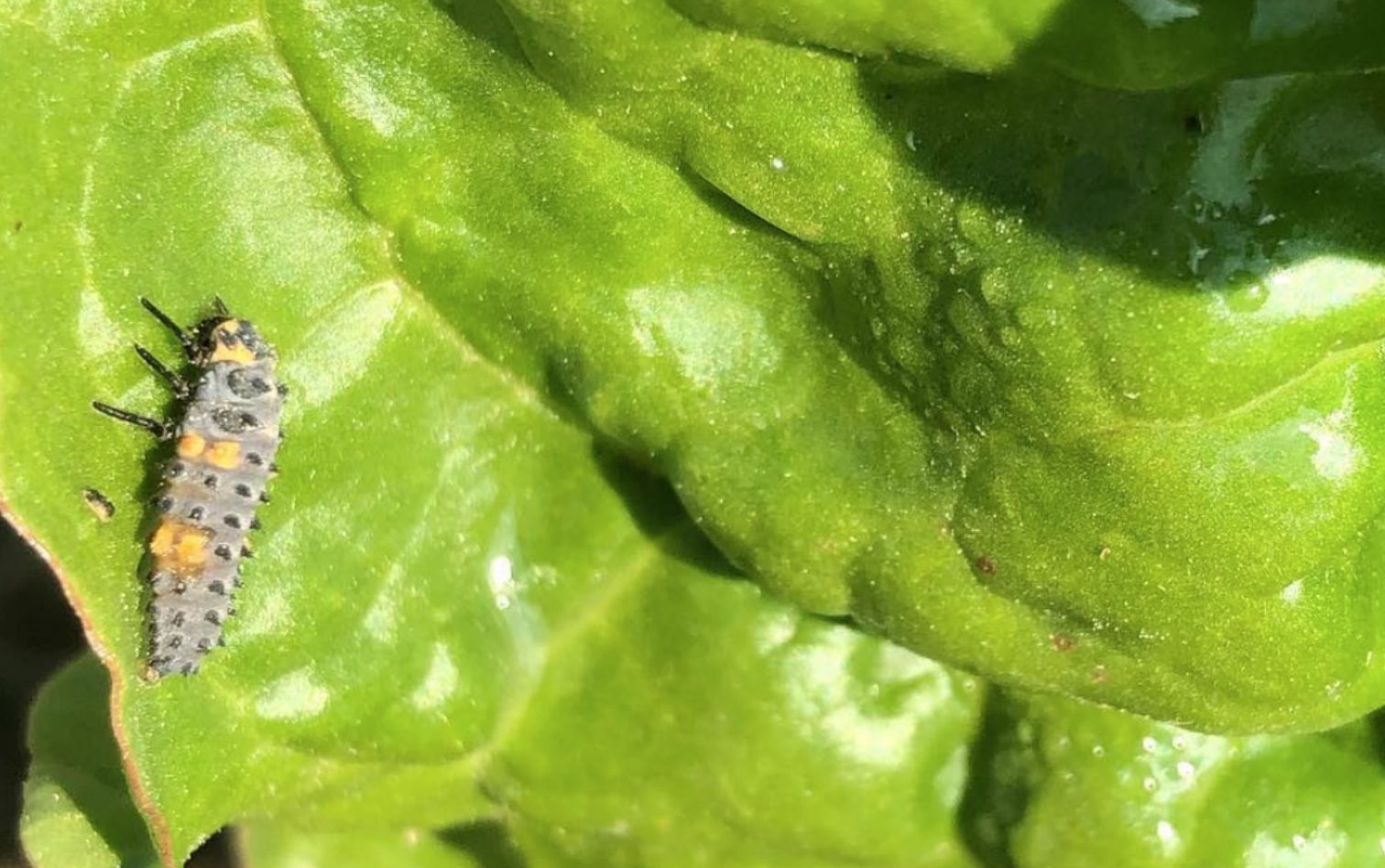Insomnia has been in my life since college. At first, it was midterms and relationship problems that kept me awake at night. As I got older, I found myself stewing over work-related issues that I couldn’t solve, emails that needed to be answered, or office politics that never seemed to go away. These days, I’m happy to tell you that the only thing keeping me awake at night is bugs.
But it’s not what you think – we don’t have bugs in our house, thankfully. It’s the garden pest variety that are troubling my sleep these days. Each week, Steven and I do a plant health walk through the field, checking each crop for pest problems. And each week, we find something eating one of our crops. It’s inevitable on an organic farm – we all have bugs, and that’s okay! In fact, our goal is never to eliminate all the bad bugs eating our crops. If we did that, the good bugs wouldn’t have anything to eat and would leave. So, how do you distinguish a good bug from a bad bug?
Bag bugs: These guys destroy your plants, and they come in two varieties: chewing and sucking. For example, aphids suck. Literally, they are a sucking insect and destroy your plants by sucking nutrients from the stems or leaves. Caterpillars, alternately, are a chewing insect. These pesky guys leave little holes all over the leaves and flowers.
Good bugs: These guys on the other hand are usually carnivorous bugs. They aren’t interested in eating your plants, they prefer to dine on other bugs instead. Examples of these are Ladybugs, Green Lacewings, Praying Mantis, and Assassin Bugs. Beneficial insects are the heroes of the garden and can each devour thousands of aphids and other small bugs each day.
The goal of our organic pest control program at Maeday Farm is to have an equal balance of good bugs and bad bugs. When we find plant damage, our first step is always to determine what bug is feeding on the plant. You need this step in order to form a response, or a plan to combat the damage. However, it’s important to note that a response is not always needed or warranted. Often, it just takes the good bugs a few days to determine that your garden is now a good source of food for them. We usually try to wait and let nature take action before we do anything. We only step in if an infestation is out of control, and the bad bugs are threatening to destroy entire plants.
Planting flowers and herbs that are attractive to beneficial insects is always a good idea. We plant clovers, dill, radishes and carrot, which are all attractive to beneficial insects for both pollen and nectar. We also try to create habitat to attract wolf spiders, which are native to Florida and voracious consumers of grasshopper and cucumber beetles. Wolf spiders live on the ground and do not spin webs. They generally prefer damp and shady places, which we create by using mulch in our rows.
While large and healthy plants are generally unlikely to be overtaken by an insect infestation, newly planted seedlings are at a much higher risk. We protect new seedlings by covering them in insect row cover at the time of transplanting. This allows the plant a few weeks to grow without encountering any insect related damage. We remove the row cover once the plant begins flowering and needs pollination. At this point, the plant should be large enough to withstand a few insect nibbles.
Intervention
If an insect infestation is bad enough that intervention is warranted, we always prefer to try hand-picking the pests first. It’s the most economical, and environmentally friendly approach. As someone who’s always been a bit squeamish about squishing bugs, this is certainly not my favorite activity. However, as with most things, it’s getting easier with time. Handpicking also allows you to closely monitor for eggs that may have been laid on your plants as you are removing the juvenile and adult insects.
Water is another environmentally-friendly removal strategy. Often a strong rain may be enough to knock pests down, but during dry spells, we use a backpack sprayer filled with water and aim the nozzle at the back of our plant leaves.
Organic pesticides are available for use, but we tend to leave these as a last resort. No pesticide is perfect, and often even the environmentally-friendly ones that we use can harm beneficial insect populations. Organic neem oil is generally our preferred method for dealing with pests, as it has been shown not to harm ladybugs or earthworms at low doses. We specifically avoid spraying neem oil on flowers as we do not want honey bees and butterflies to pick up the oil when they are collecting nectar, as the results are not as clear as to whether neem oil is harmful to these species.
There’s so much more to say about pests and beneficial insects – Stay tuned for more bug-related news, tips, and tricks at a later date.
